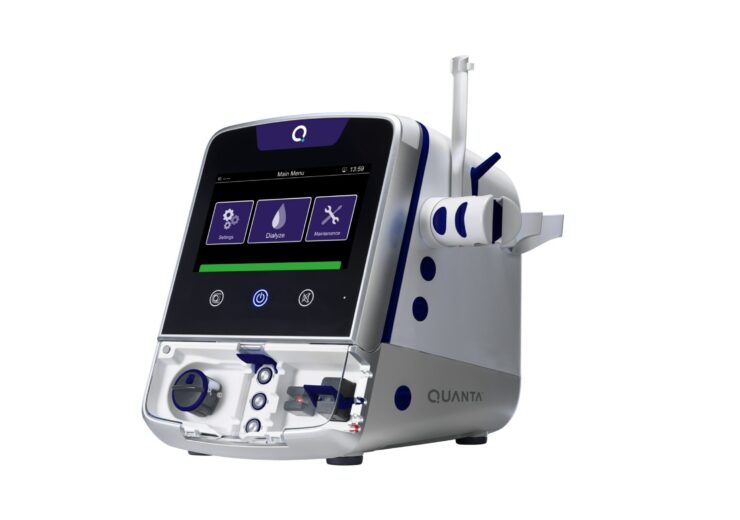The FDA approval expands the indication for Quanta Dialysis System to include two new continuous renal replacement therapy (CRRT) modalities, continuous venovenous hemodialysis (CVVHD) and slow continuous ultrafiltration (SCUF)

The Quanta Dialysis System. (Credit: PRNewswire/Quanta Dialysis Technologies)
UK-based medical technology company Quanta Dialysis Technologies has received the US Food and Drug Administration (FDA) 510(k) approval for the expanded use of its Quanta Dialysis System.
The compact haemodialysis device was originally designed to serve people with end-stage kidney disease (ESKD) who receive treatment with dialysis or a kidney transplant.
The FDA approval expands the indication for Quanta Dialysis System to include two new modalities of continuous renal replacement therapy (CRRT).
It allows the device to be used for continuous venovenous hemodialysis (CVVHD) and slow continuous ultrafiltration (SCUF) procedures.
With the expanded approval, Quanta becomes the only FDA-approved dialysis device to offer both intermittent haemodialysis (IHD) and sustained low-efficiency dialysis (SLED).
Quanta CEO Alejandro Galindo said: “This clearance is a true game-changer for acute care settings. Hospitals are often constrained with limited space and nursing staff.
“The Quanta Dialysis System with TKT software provides an all-in-one solution for hospitals with an intensive care unit (ICU) looking to reduce their device footprint, maximise their operational efficiencies, reduce the burden on nurses and substantially lower consumables expenses.”
According to the company, the haemolysis device features the latest Trinal Kidney Therapy (TKT) software that provides a treatment solution for critical acute kidney injury (AKI) patients.
The system supports dialysate flow rates from 50 to 500mL/min and treatment times up to 24 hours of continuous delivery.
Also, Quanta said that CRRT provides a slower and gentler alternative to conventional dialysis.
Unlike traditional haemodialysis, which occurs over a four-hour period, continuous dialysis runs 24 hours a day to provide better real-time management of volume and biochemistry for patients.
The company plans to commercialise its haemodialysis system with TKT software this year.
Quanta chief medical officer Paul Komenda said: “Critically ill patients that are hemodynamically unstable, such as those with severe AKI, are more challenging to manage in the ICU balancing volume status, inotropic support and ventilation requirements.
“Because of its slower rate of fluid removal, CRRT may cause less stress for the patient and enable more real-time decision-making for clinical teams on a minute-to-minute basis.
“However, once the hemodynamic status of the patient has improved, a transition to IHD or SLED may be the best option. A device that can perform all three modalities in one is ideal.”
